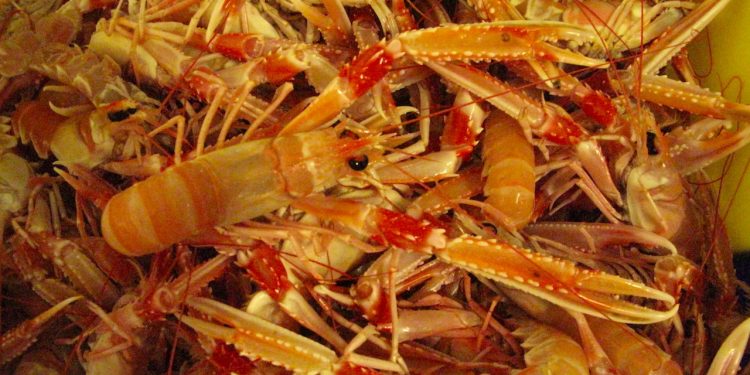Whatever you want to call them – nephrops, prawns, langoustine Norway lobster – this is one of the most valuable fisheries in European waters.
One of the challenges has historically been that langoustine, as a ground-hugging burrower, don’t show up on an echo sounder. So it has been practically impossible to tell which are the most productive parts of any tow.
Now that’s changing as a system originally developed by Notus with US shrimp fishermen has been adapted for fishing langoustine, providing a constant indication of the volume of catch heading for the codend.

The Notus Echo is an audio device, with a sorting grid or grate that acts as a sounding board, coupled to a sound receiver which transmits a signal to a wheelhouse display.
The Notus Echo detects the sound of langoustine hitting the grate, and this provides the skipper with a readout indicating the catch rate. For the US shrimpers, using the Notus Echo doubled or even tripled catch rates.
Swedish twin-rigger Glittfors has been one of the first to install the system, and for skipper Thomas Andersen, it has been a game changer, telling him exactly which section of each tow is where his catch comes from. Notus fitted the system to the trawler’s sorting grids, with a command unit, hydrophone and computer to receive and display data.
Due to the different audible signature of langoustine, Notus tuned the Echo for this fishery. While Swedish trawlers work with a grid that serves as the sounding board, Notus developed a grate for UK trawlers that do not use sorting grids.
‘We installed Echo to see where we are catching,’ said skipper Thomas Andersen.
‘The Echo is becoming a very useful tool. We are finding the areas on our tow where we catch best.’
Analysis of the Echo data shows that langoustine catches are concentrated in hot spots, and the data from the Echo allows the skipper to identify those prime areas and tow back over them, minimising fuel consumption by avoiding less productive grounds where catches are almost zero.
‘We can also see when we are not catching anything and wasting fuel. We are very pleased with the Echo sensor and it works very well,’ Thomas Andersen said.









